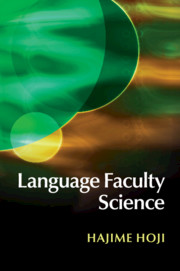Book contents
- Language Faculty Science
- Language Faculty Science
- Copyright page
- Contents
- Preface
- Glossary
- 1 Introduction
- 2 The fundamental schematic asymmetry
- 3 Deducing definite and testable predictions
- 4 Obtaining definite and categorical experimental results
- 5 Experiments in language faculty science
- 6 Illustration: Experiments in English
- 7 Illustration: Experiments in Japanese
- 8 Summary and concluding remarks
- Book part
- Book part
- Glossary
- Notes
- References
- Author index
- Word index (English)
- Word index (Japanese)
- Subject index
- References
References
Published online by Cambridge University Press: 05 March 2016
- Language Faculty Science
- Language Faculty Science
- Copyright page
- Contents
- Preface
- Glossary
- 1 Introduction
- 2 The fundamental schematic asymmetry
- 3 Deducing definite and testable predictions
- 4 Obtaining definite and categorical experimental results
- 5 Experiments in language faculty science
- 6 Illustration: Experiments in English
- 7 Illustration: Experiments in Japanese
- 8 Summary and concluding remarks
- Book part
- Book part
- Glossary
- Notes
- References
- Author index
- Word index (English)
- Word index (Japanese)
- Subject index
- References
- Type
- Chapter
- Information
- Language Faculty Science , pp. 376 - 381Publisher: Cambridge University PressPrint publication year: 2016



